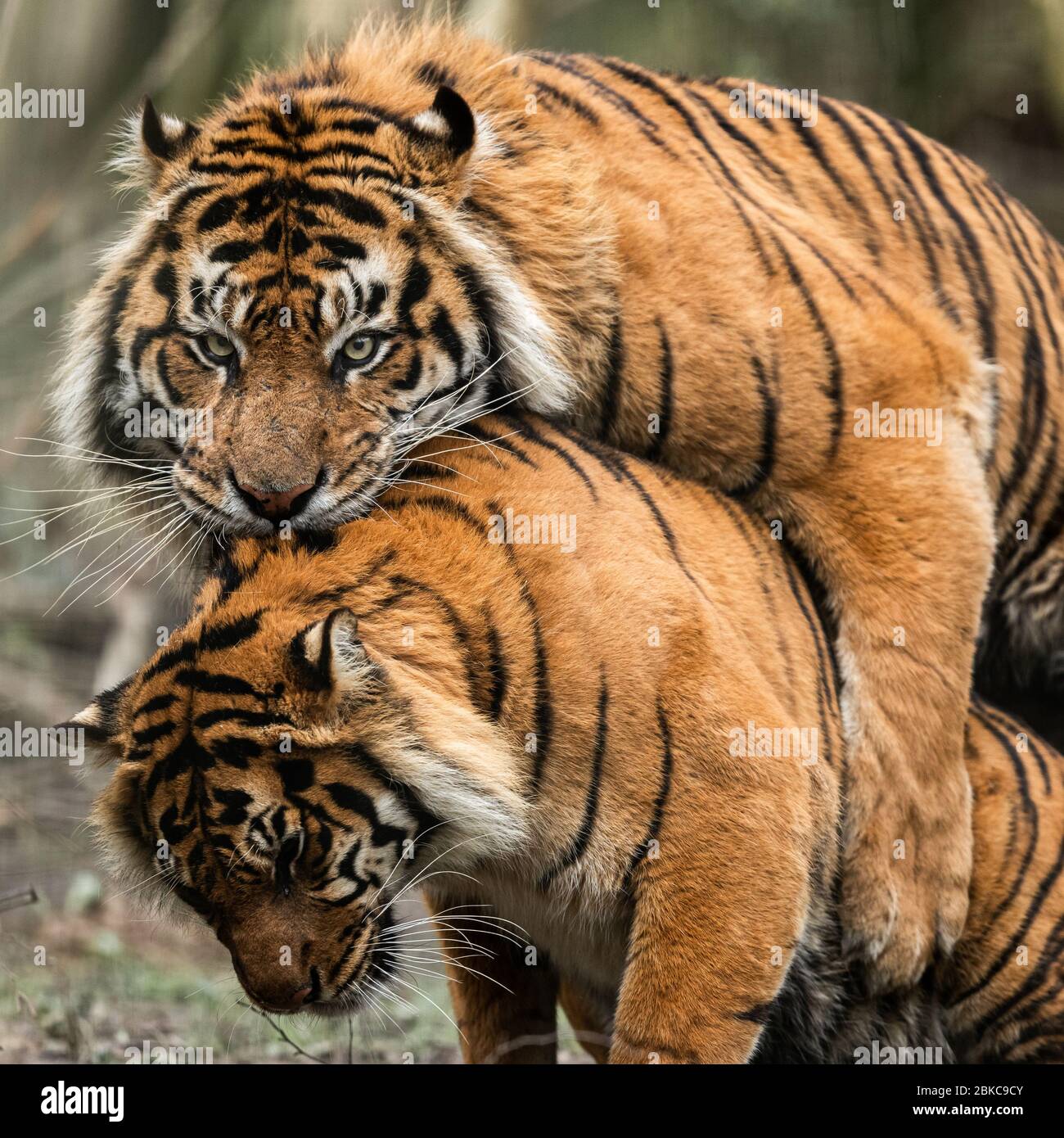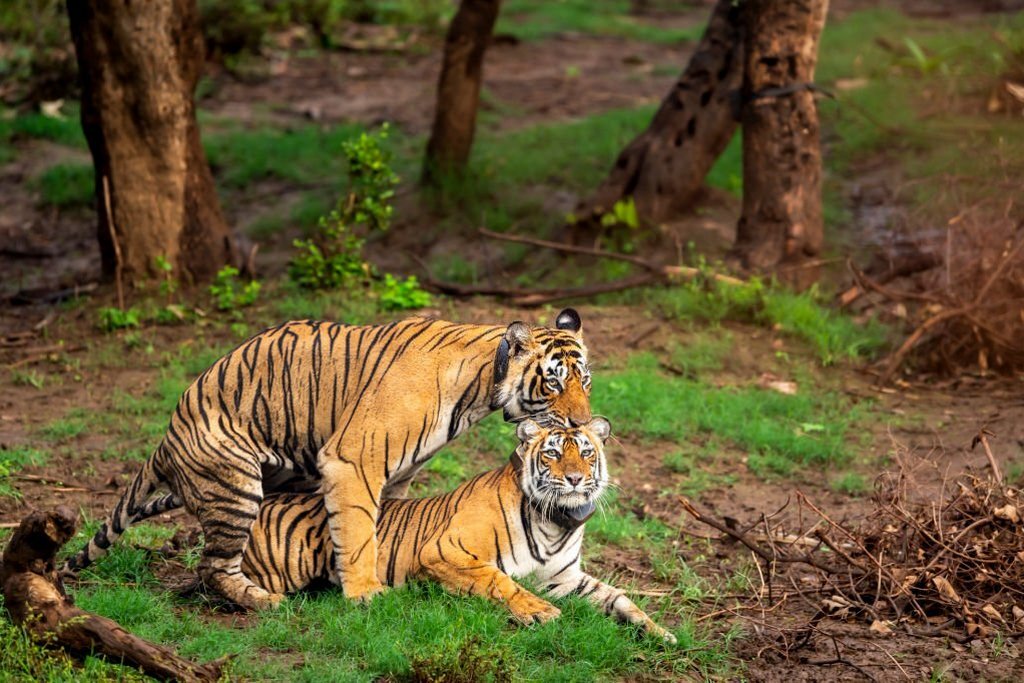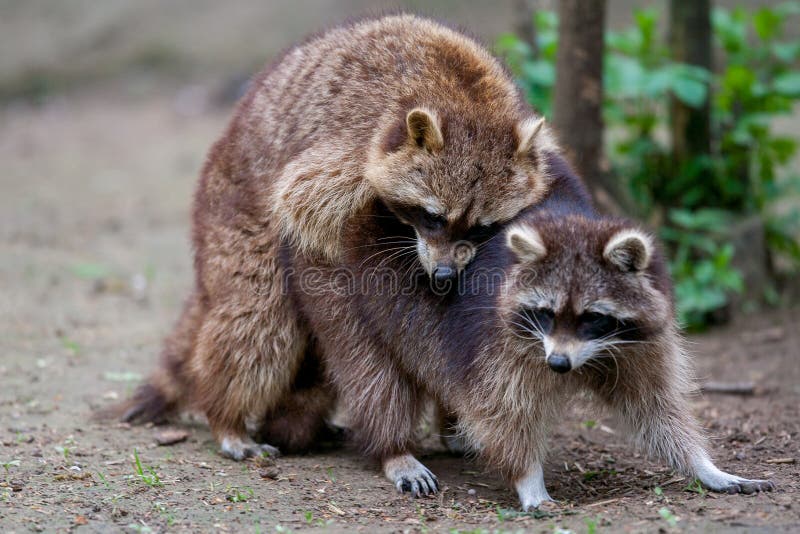There is something truly captivating about observing animals in their natural state, and when it comes to horses, seeing them engage in their ancient breeding rituals is quite a powerful sight. It is, perhaps, a glimpse into a world that feels both wild and deeply connected to life's basic rhythms. This kind of interaction, so raw and honest, can be a really amazing thing to watch, showing us how these animals have perpetuated their kind for ages.
The interactions you might see are often full of both great strength and a surprising gentleness. You get to see the sheer power of the male horses, the stallions, as they present themselves, and the quiet, steady presence of the female horses, the mares. It is, in a way, a very clear picture of nature's design, playing out right before your eyes, showing us a fundamental part of their existence.
From the first subtle signs of interest to the actual moment of connection, there is a whole series of actions and communications that happen. This process, whether out in wide open spaces or in a more managed setting, reveals so much about horse behavior. We will, you know, explore what this natural way of bringing new life into the world actually involves, step by step.
- Minecraft Castle
- Dodgers Vs Braves
- Who Is Stephanie Abrams Married To Now
- Son Na Eun
- Melanie Zanona Salary
Table of Contents
- What is it Like to See Mating Horses Naturally?
- The Natural Dance of Mating Horses Naturally
- Courtship Signals and Behaviors in Mating Horses Naturally
- How Do Stallions and Mares Act During Mating Horses Naturally?
- Getting Ready for Mating Horses Naturally
- What Challenges Might Come Up with Mating Horses Naturally?
- Looking at Other Ways to Breed Besides Mating Horses Naturally
- How Does the Process of Mating Horses Naturally Happen?
What is it Like to See Mating Horses Naturally?
Witnessing horses mate in a completely natural setting is, quite frankly, a truly memorable experience. It is a moment where the raw instincts of these magnificent animals come to the forefront, stripped of any human interference, so to speak. You get to see a powerful display of life’s basic continuation, a process that has been going on for thousands of years. It feels, you know, very much like stepping back in time, observing a wild, untamed interaction that is both beautiful and, in some respects, a little bit awe-inspiring. The energy between the two animals is palpable, a sort of silent conversation that builds and then, almost suddenly, culminates in a brief, intense act. It is a rare privilege, actually, to be present for such an intimate and fundamental event, one that speaks volumes about the very essence of their species. The sounds, the movements, the sheer force of the stallion, and the mare's patient acceptance, all combine to create a vivid picture that stays with you. This isn't just about reproduction; it is, perhaps, about the very spirit of the horse, untamed and true to its ancient ways. You might even feel a sense of connection to the wild world, seeing these creatures follow their deepest urges, completely unburdened by anything but their own instincts. It is, you know, a very real and unfiltered moment.
The Natural Dance of Mating Horses Naturally
When we talk about horses mating naturally, it is more than just a single action; it is, in a way, a whole series of interactions that play out like a kind of performance. This "dance" involves a range of feelings and actions, from something quite gentle to moments that are a bit more forceful, even playful, but always, always with a clear sense of agreement from the mare. You might see the stallion approach with a certain kind of swagger, maybe a bit of a strut, showing off his readiness. The mare, on the other hand, will give off subtle signs, letting him know if she is interested or not. It is, you know, a delicate balance of pushing and pulling, of testing boundaries and showing respect. Sometimes, the stallion might nip gently at her neck or flank, a sort of invitation, or he might nudge her, encouraging her to move. The mare might swish her tail, lift her head, or even turn her body a certain way to show she is receptive. This back-and-forth, this almost silent conversation, is what makes the whole thing so compelling to watch. It is not always smooth; there can be moments of rougher play, a bit of chasing, or even a sudden kick from the mare if she is not ready or if the stallion is too pushy. But through it all, there is a clear understanding between them, a shared language that allows the process to unfold as it should. It is, perhaps, a very old ritual, perfected over countless generations, ensuring that only willing partners proceed. The beauty lies in this unscripted interaction, the way they move around each other, circling, sniffing, and communicating their intentions without a single spoken word. It is, you know, truly a sight to behold.
Courtship Signals and Behaviors in Mating Horses Naturally
Before any actual mating happens, there is a period of getting to know each other, a kind of dating process, if you will. Horses use a whole range of signals and actions to show their interest and readiness for natural mating. For a stallion, this often starts with what we call a "flehmen response." He might lift his head high, curl back his upper lip, and sniff the air, especially if he has caught the scent of a mare who is ready to breed. This action helps him pick up on special chemical signals, called pheromones, that the mare releases. He might also make soft whinnying sounds or even a deep rumble in his chest, trying to get her attention. He will, perhaps, walk around her, maybe even circle her, showing off his size and strength. He might nudge her with his nose, or lightly nip at her mane or neck, a bit like a gentle tease. The mare, in return, has her own ways of showing she is interested. She might stand still for him, lower her head, or even lift her tail slightly, which is a very clear sign of acceptance. She might also urinate in front of him, releasing more of those important scents that tell him she is ready. If she is not interested, she will typically lay back her ears, kick out, or move away quickly, making it very clear that she is not open to his advances. It is, you know, a very intricate dance of communication, where both animals send and receive messages, ensuring that the process is, in some respects, consensual. This back-and-forth can go on for a while, sometimes minutes, sometimes longer, until both are completely aligned and ready to proceed. It is, actually, a very fascinating display of animal communication, showing how much they rely on subtle cues.
How Do Stallions and Mares Act During Mating Horses Naturally?
The behavior of both the male and female horses during natural mating is quite distinct, yet they work together in a very coordinated way. The stallion, for instance, typically approaches the mare with a great deal of energy and focus. He might, you know, nuzzle her flank or neck, perhaps even rest his head on her back, as a way to test her readiness. If she is receptive, she will usually stand firm, often lifting her tail to one side, which is a very clear invitation for him to mount. He will then, perhaps, try to mount her, often needing a few attempts to get into the right position. His actions are driven by instinct, a powerful urge to complete the act. He might make soft sounds, a kind of low rumble, during the process. The mare's role is just as important, though it might seem more passive. She must be willing and cooperative, standing still and accepting the stallion's weight and movements. If she is not ready or not interested, she will often move away, kick, or even bite, making it very clear that she is not accepting his advances. This is why consent is such a big part of natural horse mating; the mare has a very real say in the matter. Once the stallion successfully mounts, the actual act is quite quick. He will often make a final push, and then dismount. After the act, both horses might stand quietly for a moment, perhaps even nuzzle each other briefly. The stallion might then move away, perhaps showing a bit of a proud stance, while the mare might shake her body or simply return to grazing. It is, you know, a very direct and instinctual process, driven by their basic biological need to reproduce, and both play their part with a certain kind of natural grace.
Getting Ready for Mating Horses Naturally
For those who manage horses and wish for natural mating to occur, there are some important things to consider to make sure the process is as smooth and safe as possible. It is not just about putting a stallion and a mare together; there is, you know, a bit of preparation involved to set them up for success. First and foremost, both animals should be in good health. This means making sure they are well-fed, have access to clean water, and are free from any illnesses or injuries that could make the process difficult or unsafe. A veterinarian can, perhaps, do a check-up to ensure both are physically ready for breeding. The environment where the mating will happen is also very important. It should be a safe, spacious area, free from any hazards like sharp objects, fences they could get caught on, or slippery surfaces. A large, open paddock or a very secure enclosure is usually best, allowing them plenty of room to move around naturally without feeling confined. You want to create a calm atmosphere, too, so minimizing distractions or loud noises is a good idea. Sometimes, it is helpful to let the mare and stallion spend a little time in nearby paddocks first, so they can get used to each other's presence and scents before being put together directly. This can help reduce any initial tension or aggression. Preparing for natural mating is, you know, about creating the best possible conditions for these animals to follow their instincts safely and effectively, ensuring their well-being throughout the whole process. It is, perhaps, a very thoughtful approach to horse breeding, respecting their natural ways.
What Challenges Might Come Up with Mating Horses Naturally?
Even when you try to create the perfect setting, natural mating can, you know, sometimes present a few hurdles. It is not always a straightforward process, and being aware of potential difficulties can help you manage them if they arise. One common challenge is if the mare is not receptive to the stallion. She might be unwilling to stand still, or she might show aggressive behavior like kicking or biting, even if she is biologically ready to breed. This could be due to her personality, a previous bad experience, or simply not liking that particular stallion. In such cases, forcing the issue is not a good idea and can be dangerous for both animals. Another issue can be the stallion's inexperience or overly aggressive behavior. A young stallion might not know how to approach a mare properly, or an overly dominant one might be too rough, scaring the mare away. Safety for both animals is, you know, always a top concern. There is also the challenge of timing; ensuring the mare is at the peak of her heat cycle is crucial for successful conception. Missing this window means the mating might not result in a pregnancy. Sometimes, even if the mating happens, conception does not occur, which can be due to fertility issues in either animal, or simply bad luck. Managing these challenges often involves patience, careful observation, and sometimes, the guidance of an experienced horse person or a veterinarian. It is, perhaps, a very real part of working with animals, where you have to adapt to their individual needs and temperaments. You might even need to try different approaches or pairings to find what works best. It is, you know, a learning process, too.
Looking at Other Ways to Breed Besides Mating Horses Naturally
While natural mating is, you know, a beautiful and very instinctual way for horses to reproduce, it is not the only method available, especially in modern horse management. There are, perhaps, other techniques that people use for various reasons, offering different benefits and controls. One common alternative is called "hand breeding." In this method, the stallion is led to the mare by a handler, and the mating is carefully supervised and controlled. This can be safer for both animals, as the handlers can step in if things get too rough or if the mare is unwilling. It also allows for more precise timing of the mating, which can increase the chances of pregnancy. Another widely used method is "artificial insemination," often shortened to AI. With AI, the stallion's sperm is collected and then placed into the mare's reproductive tract using special equipment, without any direct physical contact between the two horses. This method is very popular because it allows for the use of semen from stallions who are far away, or even from stallions who have passed away if their semen was frozen. It also reduces the risk of injury to both horses and can be a more hygienic process. Sometimes, it is, you know, a very practical choice for breeders who want to use a specific bloodline without transporting animals across long distances. While these methods offer more control and convenience, they do lack the raw, unscripted beauty of natural mating. Each method has its own set of considerations, and the choice often depends on the goals of the breeder, the animals involved, and, perhaps, the resources available. It is, actually, a very diverse field, offering many paths to bringing new foals into the world.
How Does the Process of Mating Horses Naturally Happen?
Horse mating, just like reproduction in many other animals, is a very basic process that is absolutely necessary for creating new life. It is, you know, a series of steps and actions that allow the male's reproductive cells to reach the female's, eventually leading to a new foal. The whole thing starts with the mare being in "heat," or estrus, which is the time when she is fertile and ready to accept a stallion. During this period, her body releases hormones that signal her readiness, and she often shows specific behaviors, like those we talked about earlier, such as lifting her tail or urinating in front of a stallion. Once the mare shows she is receptive, the stallion will attempt to mount her. This involves him placing his front legs over her back and then, perhaps, positioning himself for the act. The actual transfer of sperm happens very quickly, often lasting only a few seconds. After this, the sperm travels through the mare's reproductive system, making its way to her eggs. If a sperm successfully meets and joins with an egg, that is when fertilization happens, and a new life begins to form. This fertilized egg then starts to develop, settling into the mare's uterus, where it will grow and develop over many months until it is time for the foal to be born. It is, in a way, a very efficient and remarkable biological process, perfected over countless generations to ensure the continuation of the horse species. Every step, from the first scent to the final act, is, you know, part of a finely tuned system that has allowed horses to thrive across the globe. It is, perhaps, a very simple concept at its heart, yet incredibly complex in its biological workings.
This article has explored the compelling aspects of natural horse mating, from the initial, raw displays of power and tenderness to the intricate dance of courtship signals. We looked at how stallions and mares behave during this process, the preparations needed for a successful natural breeding, and some common challenges that might arise. We also touched upon alternative breeding methods, providing a broader view of horse reproduction, and finally, explained the fundamental biological process of how mating naturally leads to new life. It is, you know, a very complete picture of a truly ancient and beautiful natural event.
Related Resources:



Detail Author:
- Name : Mr. Avery Zieme
- Username : abdiel24
- Email : omcdermott@herman.com
- Birthdate : 1991-03-20
- Address : 7558 Hoppe Cove Hilperthaven, UT 07306-0645
- Phone : (214) 421-0746
- Company : Dooley, Harber and Altenwerth
- Job : Physics Teacher
- Bio : Ullam consequatur ea sit. Commodi culpa magnam nisi recusandae. Magnam soluta voluptas reiciendis repudiandae possimus dolorem tempore.
Socials
facebook:
- url : https://facebook.com/gerlachm
- username : gerlachm
- bio : Repudiandae exercitationem numquam alias laborum distinctio ea.
- followers : 3266
- following : 81
twitter:
- url : https://twitter.com/gerlach1989
- username : gerlach1989
- bio : Est id minus repudiandae commodi laudantium perferendis ut. Cupiditate molestias corporis necessitatibus tempora est.
- followers : 2908
- following : 2132